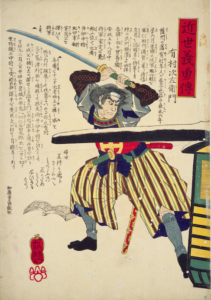On an unseasonably snowy spring morning in 1860 the most powerful man in Japan was cut down in broad daylight as he was about to enter Edo Castle, the seat of government of the Tokugawa Shogun, whose military regime, the Tokugawa Bakufu, had ruled for two and a half centuries.

The shogun at the time was a fifteen-year-old boy, and his regent, Ii Naosuke, who ruled with an iron fist, was widely reviled for wresting power from his political enemies, perceived lèse–majesté against a powerless yet sanctified Emperor in unilaterally concluding foreign trade treaties against the Imperial will, and his notorious purge of his political enemies from the highest echelons of the government. Ii’s assassination, which marked the beginning of the end of the shogun’s rule, was followed by eight years of chaos and turmoil and violence, which would not subside until the collapse of the shogun’s government and the restoration of Imperial power—the series of events collectively called the Meiji Restoration.
The assassination of Ii Naosuke is the subject of Part I of my three-part Samurai Assassins: “Dark Murder” and the Meiji Restoration, 1853-1868. I tell the story of this most important event of the era from the perspective of Ii’s enemies, including the band of eighteen samurai who colluded to assassinate him.
One of the eighteen, Arimura Jizaemon, who beheaded Ii, is depicted on the cover of the book. The image is part of a series entitled Kinseigiyuden (“Biographies of Loyal and Courageous Men”) by Ichieisai Yoshitsuya (1822 – 1866), originally published in a magazine called “Nishikie.”

